Gluten- free labelling
Naturally gluten-free foods and manufactured gluten-free products that do not contain gluten and meet the FDA standard of under 20 ppm of gluten, can be labelled as “gluten-free”. [1]
United States
The FDA regulates all except: meat products, poultry products, egg products, and mixed food products that contain more than 3% raw meat or 2% or more cooked meat or poultry. These foods are regulated by the USDA. Allergen and gluten-free labeling of USDA food is voluntary. Allergen labeling of foods regulated by FDA is mandatory.The FDA rule for gluten-free labeling is voluntary but defines and sets conditions on the use of the term “gluten-free” in foods, including:
- Foods that inherently do not contain gluten (e.g., raw carrots or grapefruit juice) may use the “gluten-free” claim.
- Foods with any whole, gluten-containing grains (e.g., spelt wheat) as ingredients may not use the claim;
- Foods with ingredients that are gluten-containing grains that are refined but still contain gluten (e.g., wheat flour) may not use the claim;
- Foods with ingredients that are gluten-containing grains that have been refined in such a way to remove the gluten may use the claim, so long as the food contains less than 20 ppm gluten/has less than 20 mg gluten per kg (e.g. wheat starch);
- Foods may not use the claim if they contain 20 ppm or more gluten as a result of cross-contact with gluten containing grains.
Canadian Labeling
Health Canada (HC) and Canadian Food Inspection Agency (CFIA) are responsible for the regulation of all foods including mealt, poultry, and egg products. Canada’s Food and Drug Regulations (FDR) requires a complete list of ingrdients on the label and if an ingredient or a component of the ingredient contains any protein, modified protein, or protein fraction that is derived from gluten sources (barely, rye, triticale, wheat, kamut or spelt) – it must be declared on the food label.The ingredient must be declare in common language, such as semolina (wheat)in in the ingredient list or in a “contains“ statement.
The FDR regulations for labeling a product gluten-free have been in effect since 1995. They have recently been revised to allow for the inclusion of oats as gluten-free if they meet the regulation standard of under 20 ppm gluten.
There are many grains and foods that naturally do not contain gluten and can be safely consumed by individuals with celiac disease. The naturally gluten-free grains include rice, corn, buckwheat, millet, amaranth, oats, quinoa, tapioca, sorghum and teff. Additionally plain potatoes, legumes, many dairy products, meat, fish, poultry, eggs, oils, fruit and vegetables are naturally gluten-free. A healthy balance diet can be created using these naturally gluten-free foods.
There is also a wide range of commercially prepared gluten-free products including mixes, bread, pasta, cookies, crackers, cereals, etc. These manufactured products can be identified by the "gluten-free" designation on the packaging.
The notation of gluten-free by US or Canadian regulations ensures that the product does not contain more than 20 ppm gluten gluten threshold.
FDA regulation
Download: FDA regulation
Gluten-free products from Europe
Products with a gluten content of less than 20 mg/kg (20 ppm) may use the designation "gluten-free". In addition, manufacturers may also use the symbol of an ear of wheat with a cross through it, which is awarded by coeliac disease groups. However, this is a voluntary designation and is not a guarantee that the product is gluten-free. The only valid symbol is that awarded by the Association of European Coeliac Societies (AOECS). Since the end of 2013, the German Coeliac Society (DZG) has exclusively offered manufacturers European license contracts, with which products can be exported to other countries. If a manufacturer has signed a European contract with the DZG or another European coeliac disease group there is a three-digit registration number under the ear of wheat symbol. Foods that are naturally gluten-free are not marked.
Use EU regulation No. 609/2013 here
Use EU regulation No. 609/2013 here
May contain traces of ...
There are some foods that are risky even though neither gluten nor products containing gluten are mentioned in the list of ingredients. The risk of contamination with gluten during the production process warrants a warning of the potential risk. [3]
An example of such risk would be a chocolate factory that also produces chocolate cookies. A may contain statement alerts the consumers of the risk of cross contact with the gluten containing ingrdients. However, under FDA regluations the may contain statement is voluntary and manufacturers are not required to disclose cross contact between the food product and the potential risk of gluten contact.
An example of such risk would be a chocolate factory that also produces chocolate cookies. A may contain statement alerts the consumers of the risk of cross contact with the gluten containing ingrdients. However, under FDA regluations the may contain statement is voluntary and manufacturers are not required to disclose cross contact between the food product and the potential risk of gluten contact.
References
- FDA/CFSAN, “Gluten-Free Labeling of Foods, Final Regulatory Impact Analysis and Regulatory Flexibility Analysis,” 2013
- Health Canada – Gluten Free labeling regulation. http://www.hc-sc.gc.ca/fn-an/label-etiquet/allergen/index-eng.php
- Thompson, T., Lee, AR, Grace, T. Gluten Contamination of Grains, Seeds, and Flours in the United States; A Pilot Study. JADA 2010; 110:937-940
Further information on this topic
Professional articles
5
Show all
Presentations
8
Show all
Studies
4
Show all

Gut Microbiota in Health and Disease
Ms Wilson’s article reviews the influence of the environment on the gut microbiome and discusses potential dietary avenues to improve it.
>> Read more... <<<
>> Read more... <<<

The influence of the microbiome on gluten-related diseases
The increasing prevalence of food intolerances, especially in relation to certain carbohydrates, represents a global health problem. Moreover, intolerance of gluten and gluten-bound substances, e.g. amylase-trypsin inhibitor (ATI) is blamed for intestinal (e.g. meteorism, pain, constipation, diarrhea) and extra intestinal symptoms (e.g. fatigue, headaches, joint pain, skin irritation) in affected patients. The pathogenesis of food intolerances is blamed on factors such as changes in the composition of the intestinal flora and its influence on mucous membrane immune tolerance.
>> Read more... <<<
>> Read more... <<<

The importance of the microbiota in the pathogenesis and treatment of celiac disease
The composition of the gut microbiome is influenced by many factors. The microbiota may also be a key influencer in overall health and disease outcomes.
>> Read more... <<<
>> Read more... <<<
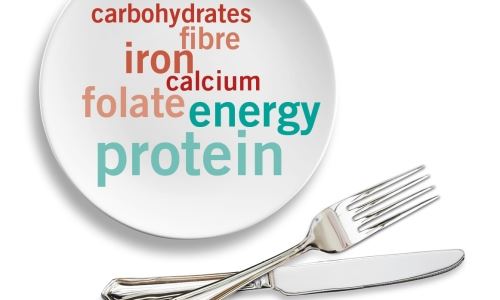
Analysis of dietary patterns in people with and without celiac disease
How balanced is the diet of celiac disease patients? In this article, Nicoletta Pellegrini explores this topic in her current study.
>> Read more... <<<
>> Read more... <<<

Dietary compliance and the gluten-free diet
Adherence to the gluten-free diet is not always easy. There are various factors that influence the dietary behavior of individuals with celiac disease.
>> Read more... <<<
>> Read more... <<<

Gut Microbiota in Health and Disease
Ms Wilson’s article reviews the influence of the environment on the gu...

The influence of the microbiome on gluten-related diseases
The increasing prevalence of food intolerances, especially in relation...

The importance of the microbiota in the pathogenesis and treatment of celiac disease
The composition of the gut microbiome is influenced by many factors. T...

Analysis of dietary patterns in people with and without celiac disease
How balanced is the diet of celiac disease patients? In this article, ...

Dietary compliance and the gluten-free diet
Adherence to the gluten-free diet is not always easy. There are variou...
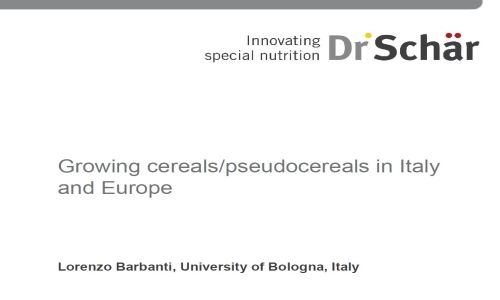
Growing cereals/pseudocereals in Italy and Europe (2013)
Lorenzo Barbanti
Assistant Professor
DipSA (Department of Agricultural Sciences)
University of Bologna, Italy
International Symposium "10 years of research in gluten-free food and future prospects", 30.11.2013, AREA Science Park, Trieste (Italy)
Assistant Professor
DipSA (Department of Agricultural Sciences)
University of Bologna, Italy
International Symposium "10 years of research in gluten-free food and future prospects", 30.11.2013, AREA Science Park, Trieste (Italy)
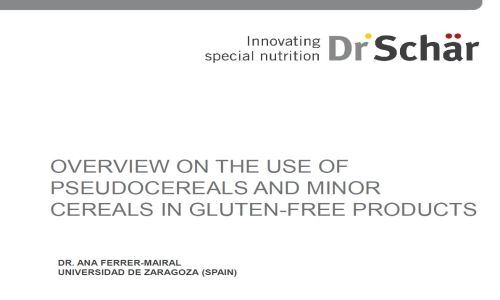
Overview on the use of pseudocereals and minor cereals in gluten - free products (2013)
Ana Ferrer-Mairal
Associate Professor in Food Technology
University of Zaragoza, Spain
International Symposium "10 years of research in gluten-free food and future prospects", 30.11.2013, AREA Science Park, Trieste (Italy)
Associate Professor in Food Technology
University of Zaragoza, Spain
International Symposium "10 years of research in gluten-free food and future prospects", 30.11.2013, AREA Science Park, Trieste (Italy)
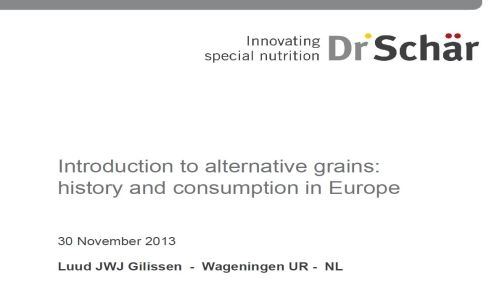
Introduction to alternative grains: history and consumption in Europe (2013)
Luud J.W.J. Gilissen
Senior scientist at Plant Research International (PRI) of Wageningen UR, The Netherlands
International Symposium "10 years of research in gluten-free food and future prospects", 30.11.2013, AREA Science Park, Trieste (Italy)
Senior scientist at Plant Research International (PRI) of Wageningen UR, The Netherlands
International Symposium "10 years of research in gluten-free food and future prospects", 30.11.2013, AREA Science Park, Trieste (Italy)
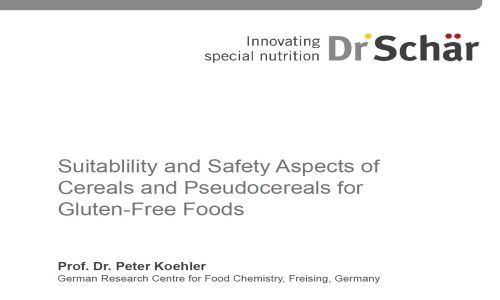
Suitability and safety aspects of cereals and pseudocereals for gluten-free foods (2013)
Peter Koehler
Professor for Food Chemistry
Technical University of Munich, Germany
Vice director of the German Research Centre for Food Chemistry
International Symposium "10 years of research in gluten-free food and future prospects", 30.11.2013, AREA Science Park, Trieste (Italy)
Professor for Food Chemistry
Technical University of Munich, Germany
Vice director of the German Research Centre for Food Chemistry
International Symposium "10 years of research in gluten-free food and future prospects", 30.11.2013, AREA Science Park, Trieste (Italy)
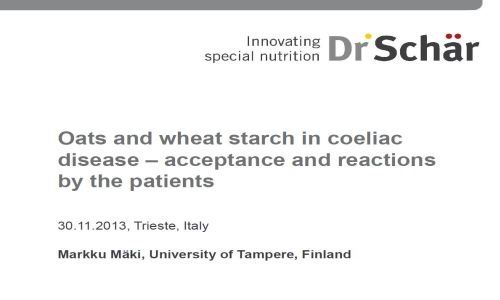
Oats and wheat starch in coeliac disease – acceptance and reactions by patients (2013)
Markku Mäki
Pediatric gastroenterologist and full Professor of Pediatrics at the University of Tampere, Finland
International Symposium "10 years of research in gluten-free food and future prospects", 30.11.2013, AREA Science Park, Trieste (Italy)
Pediatric gastroenterologist and full Professor of Pediatrics at the University of Tampere, Finland
International Symposium "10 years of research in gluten-free food and future prospects", 30.11.2013, AREA Science Park, Trieste (Italy)
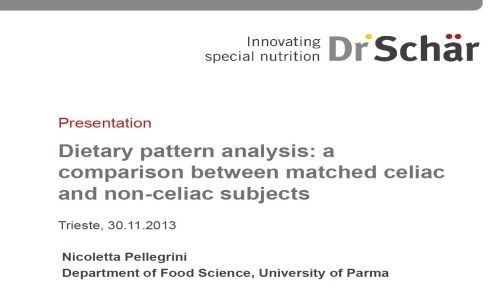
Dietary pattern analysis: a comparison between matched celiac and non-celiac subjects (2013)
Nicoletta Pellegrini
Associate Professor
Department of Food Science, University of Parma, Italy
International Symposium "10 years of research in gluten-free food and future prospects", 30.11.2013, AREA Science Park, Trieste (Italy)
Associate Professor
Department of Food Science, University of Parma, Italy
International Symposium "10 years of research in gluten-free food and future prospects", 30.11.2013, AREA Science Park, Trieste (Italy)
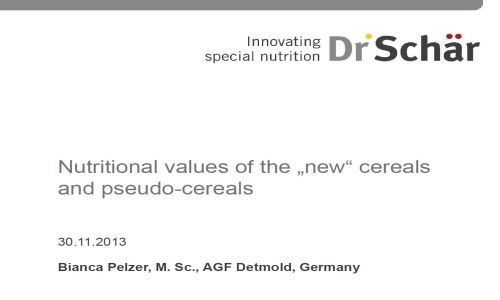
Nutritional values of the „new“ cereals and pseudocereals (2013)
Bianca Pelzer
Association of Cereal Research (AGF)
Detmold, Germany
International Symposium "10 years of research in gluten-free food and future prospects", 30.11.2013, AREA Science Park, Trieste (Italy)
Association of Cereal Research (AGF)
Detmold, Germany
International Symposium "10 years of research in gluten-free food and future prospects", 30.11.2013, AREA Science Park, Trieste (Italy)
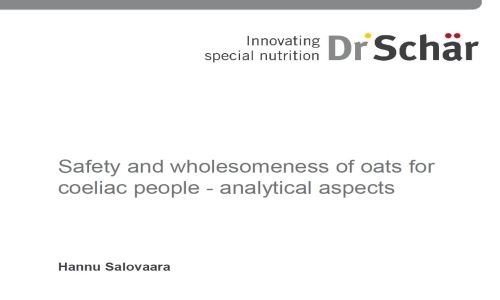
Safety and wholesomeness of oats for coeliac people - analytical aspects (2013)
Hannu Salovaara
Head of Food Technology division
Food and Environmental Sciences, University of Helsinki, Finland
International Symposium "10 years of research in gluten-free food and future prospects", 30.11.2013, AREA Science Park, Trieste (Italy)
Head of Food Technology division
Food and Environmental Sciences, University of Helsinki, Finland
International Symposium "10 years of research in gluten-free food and future prospects", 30.11.2013, AREA Science Park, Trieste (Italy)

Growing cereals/pseudocereals in Italy and Europe (2013)
Lorenzo Barbanti
Assistant Professor
DipSA (Department of Agricultur...

Overview on the use of pseudocereals and minor cereals in gluten - free products (2013)
Ana Ferrer-Mairal
Associate Professor in Food Technology
University ...

Introduction to alternative grains: history and consumption in Europe (2013)
Luud J.W.J. Gilissen
Senior scientist at Plant Research International...

Suitability and safety aspects of cereals and pseudocereals for gluten-free foods (2013)
Peter Koehler
Professor for Food Chemistry
Technical University of M...

Oats and wheat starch in coeliac disease – acceptance and reactions by patients (2013)
Markku Mäki
Pediatric gastroenterologist and full Professor of Pediat...

Dietary pattern analysis: a comparison between matched celiac and non-celiac subjects (2013)
Nicoletta Pellegrini
Associate Professor
Department of Food Science,...

Nutritional values of the „new“ cereals and pseudocereals (2013)
Bianca Pelzer
Association of Cereal Research (AGF)
Detmold, Germany
...

Safety and wholesomeness of oats for coeliac people - analytical aspects (2013)
Hannu Salovaara
Head of Food Technology division
Food and Environmen...
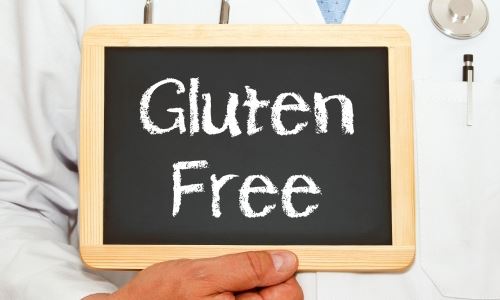
Glycaemic index of some commercial gluten-free foods
ABSTRACT
Purpose
Gluten-free products present major challenges for the food industry in terms of organoleptic, technological and nutritional characteristics. The absence of gluten has been shown to affect starch digestibility, thus increasing the postprandial glycaemic response. However, in recent years, gluten-free technologies have been improved, thus possibly modifying this quality parameter. We investigated the glycaemic index (GI) of 10 commercial foods aiming to update the GI values of the most common gluten-free products consumed in Italy.
Methods
The in vivo GI was evaluated for six bakery products and four types of pasta. The postprandial glucose response was obtained in two groups with 10 healthy volunteers each.
Results
The overall GI values ranged from 37.5 for breakfast biscuits to 66.7 for puffed multigrain cake. Breads and pasta had GI values consistently lower than those previously reported in the literature.
Conclusion
The present study showed that several commercial GF products exhibited low and medium GI values, not confirming the previous observations on the high GI of GF. However, considering the multiple formulations and processes for preparation of these products, further studies are recommended.
Resource: Eur J Nutr. 2014 Oct 17.
Francesca Scazzina • Margherita Dall’Asta • Nicoletta Pellegrini • Furio Brighenti
Purpose
Gluten-free products present major challenges for the food industry in terms of organoleptic, technological and nutritional characteristics. The absence of gluten has been shown to affect starch digestibility, thus increasing the postprandial glycaemic response. However, in recent years, gluten-free technologies have been improved, thus possibly modifying this quality parameter. We investigated the glycaemic index (GI) of 10 commercial foods aiming to update the GI values of the most common gluten-free products consumed in Italy.
Methods
The in vivo GI was evaluated for six bakery products and four types of pasta. The postprandial glucose response was obtained in two groups with 10 healthy volunteers each.
Results
The overall GI values ranged from 37.5 for breakfast biscuits to 66.7 for puffed multigrain cake. Breads and pasta had GI values consistently lower than those previously reported in the literature.
Conclusion
The present study showed that several commercial GF products exhibited low and medium GI values, not confirming the previous observations on the high GI of GF. However, considering the multiple formulations and processes for preparation of these products, further studies are recommended.
Resource: Eur J Nutr. 2014 Oct 17.
Francesca Scazzina • Margherita Dall’Asta • Nicoletta Pellegrini • Furio Brighenti

Diets that differ in their FODMAP content alter the colonic luminal microenvironment.
Abstract
OBJECTIVE:
A low FODMAP (Fermentable Oligosaccharides, Disaccharides, Monosaccharides And Polyols) diet reduces symptoms of IBS, but reduction of potential prebiotic and fermentative effects might adversely affect the colonic microenvironment. The effects of a low FODMAP diet with a typical Australian diet on biomarkers of colonic health were compared in a single-blinded, randomised, cross-over trial.
DESIGN:
Twenty-seven IBS and six healthy subjects were randomly allocated one of two 21-day provided diets, differing only in FODMAP content (mean (95% CI) low 3.05 (1.86 to 4.25) g/day vs Australian 23.7 (16.9 to 30.6) g/day), and then crossed over to the other diet with ≥21-day washout period. Faeces passed over a 5-day run-in on their habitual diet and from day 17 to day 21 of the interventional diets were pooled, and pH, short-chain fatty acid concentrations and bacterial abundance and diversity were assessed.
RESULTS:
Faecal indices were similar in IBS and healthy subjects during habitual diets. The low FODMAP diet was associated with higher faecal pH (7.37 (7.23 to 7.51) vs 7.16 (7.02 to 7.30); p=0.001), similar short-chain fatty acid concentrations, greater microbial diversity and reduced total bacterial abundance (9.63 (9.53 to 9.73) vs 9.83 (9.72 to 9.93) log10 copies/g; p<0.001) compared with the Australian diet. To indicate direction of change, in comparison with the habitual diet the low FODMAP diet reduced total bacterial abundance and the typical Australian diet increased relative abundance for butyrate-producing Clostridium cluster XIVa (median ratio 6.62; p<0.001) and mucus-associated Akkermansia muciniphila (19.3; p<0.001), and reduced Ruminococcus torques.
CONCLUSIONS:
Diets differing in FODMAP content have marked effects on gut microbiota composition. The implications of long-term reduction of intake of FODMAPs require elucidation.
Resource: Gut. 2014 Jul 12. pii: gutjnl-2014-307264. doi: 10.1136/gutjnl-2014-307264. [Epub ahead of print]
Halmos EP, Christophersen CT, Bird AR, Shepherd SJ, Gibson PR, Muir JG.
OBJECTIVE:
A low FODMAP (Fermentable Oligosaccharides, Disaccharides, Monosaccharides And Polyols) diet reduces symptoms of IBS, but reduction of potential prebiotic and fermentative effects might adversely affect the colonic microenvironment. The effects of a low FODMAP diet with a typical Australian diet on biomarkers of colonic health were compared in a single-blinded, randomised, cross-over trial.
DESIGN:
Twenty-seven IBS and six healthy subjects were randomly allocated one of two 21-day provided diets, differing only in FODMAP content (mean (95% CI) low 3.05 (1.86 to 4.25) g/day vs Australian 23.7 (16.9 to 30.6) g/day), and then crossed over to the other diet with ≥21-day washout period. Faeces passed over a 5-day run-in on their habitual diet and from day 17 to day 21 of the interventional diets were pooled, and pH, short-chain fatty acid concentrations and bacterial abundance and diversity were assessed.
RESULTS:
Faecal indices were similar in IBS and healthy subjects during habitual diets. The low FODMAP diet was associated with higher faecal pH (7.37 (7.23 to 7.51) vs 7.16 (7.02 to 7.30); p=0.001), similar short-chain fatty acid concentrations, greater microbial diversity and reduced total bacterial abundance (9.63 (9.53 to 9.73) vs 9.83 (9.72 to 9.93) log10 copies/g; p<0.001) compared with the Australian diet. To indicate direction of change, in comparison with the habitual diet the low FODMAP diet reduced total bacterial abundance and the typical Australian diet increased relative abundance for butyrate-producing Clostridium cluster XIVa (median ratio 6.62; p<0.001) and mucus-associated Akkermansia muciniphila (19.3; p<0.001), and reduced Ruminococcus torques.
CONCLUSIONS:
Diets differing in FODMAP content have marked effects on gut microbiota composition. The implications of long-term reduction of intake of FODMAPs require elucidation.
Resource: Gut. 2014 Jul 12. pii: gutjnl-2014-307264. doi: 10.1136/gutjnl-2014-307264. [Epub ahead of print]
Halmos EP, Christophersen CT, Bird AR, Shepherd SJ, Gibson PR, Muir JG.
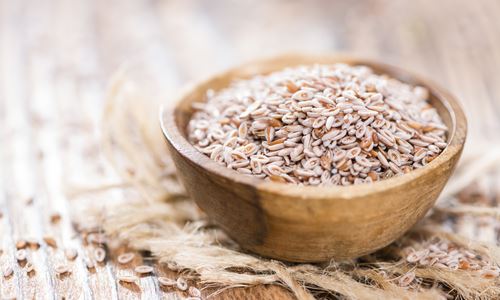
Psyllium as a substitute for gluten in pastas
Abstract
The aim of the present study was to evaluate the effect of replacing gluten in favor of psyllium in pasta’s characteristics. This study takes an exploratory and quantitative approach and was sub-divided into four steps: selection and development of recipes and chemical and sensorial analysis. Modified samples of the pasta presented 100.0% of acceptance for individuals with celiac disease and up to 94.0% for individuals without celiac disease. The most affected characteristics were odor and texture. In terms of chemical composition, reduction of energy value was 26.5% and of proportional fat was 85.4% before being cooked. Substituting wheat flour for a mixture of gluten-free flours with psyllium did not alter preference or acceptability of modified products in relation to standardized ones and amplified feeding options for celiac disease patients. Thus, there were no damages in sensorial characteristics of these products.
Resource: Journal of Culinary Science & Technology Volume 12, Issue 2, 2014
Renata Puppin Zandonadi, Raquel Braz Assunção Botelho and Wilma Maria Coelho Araújo
The aim of the present study was to evaluate the effect of replacing gluten in favor of psyllium in pasta’s characteristics. This study takes an exploratory and quantitative approach and was sub-divided into four steps: selection and development of recipes and chemical and sensorial analysis. Modified samples of the pasta presented 100.0% of acceptance for individuals with celiac disease and up to 94.0% for individuals without celiac disease. The most affected characteristics were odor and texture. In terms of chemical composition, reduction of energy value was 26.5% and of proportional fat was 85.4% before being cooked. Substituting wheat flour for a mixture of gluten-free flours with psyllium did not alter preference or acceptability of modified products in relation to standardized ones and amplified feeding options for celiac disease patients. Thus, there were no damages in sensorial characteristics of these products.
Resource: Journal of Culinary Science & Technology Volume 12, Issue 2, 2014
Renata Puppin Zandonadi, Raquel Braz Assunção Botelho and Wilma Maria Coelho Araújo

A Diet Low in FODMAPs Reduces Symptoms of Irritable Bowel Syndrome
Abstract
Background & Aims: A diet low in fermentable oligosaccharides, disaccharides, monosaccharides, and polyols (FODMAPs) often is used to manage functional gastrointestinal symptoms in patients with irritable bowel syndrome (IBS), yet there is limited evidence of its efficacy, compared with a normal Western diet. We investigated the effects of a diet low in FODMAPs compared with an Australian diet, in a randomized, controlled, single-blind, cross-over trial of patients with IBS.
Methods: In a study of 30 patients with IBS and 8 healthy individuals (controls, matched for demographics and diet), we collected dietary data from subjects for 1 habitual week. Participants then randomly were assigned to groups that received 21 days of either a diet low in FODMAPs or a typical Australian diet, followed by a washout period of at least 21 days, before crossing over to the alternate diet. Daily symptoms were rated using a 0- to 100-mm visual analogue scale. Almost all food was provided during the interventional diet periods, with a goal of less than 0.5 g intake of FODMAPs per meal for the low-FODMAP diet. All stools were collected from days 17–21 and assessed for frequency, weight, water content, and King's Stool Chart rating.
Results: Subjects with IBS had lower overall gastrointestinal symptom scores (22.8; 95% confidence interval, 16.7–28.8 mm) while on a diet low in FODMAPs, compared with the Australian diet (44.9; 95% confidence interval, 36.6–53.1 mm; P < .001) and the subjects' habitual diet. Bloating, pain, and passage of wind also were reduced while IBS patients were on the low-FODMAP diet. Symptoms were minimal and unaltered by either diet among controls. Patients of all IBS subtypes had greater satisfaction with stool consistency while on the low-FODMAP diet, but diarrhea-predominant IBS was the only subtype with altered fecal frequency and King's Stool Chart scores.
Conclusions: In a controlled, cross-over study of patients with IBS, a diet low in FODMAPs effectively reduced functional gastrointestinal symptoms. This high-quality evidence supports its use as a first-line therapy.
Resource: Gastroenterology Volume 146, Issue 1 , Pages 67-75.e5, January 2014
Emma P. Halmos, Victoria A. Power, Susan J. Shepherd, Peter R. Gibson, Jane G. Muir
Background & Aims: A diet low in fermentable oligosaccharides, disaccharides, monosaccharides, and polyols (FODMAPs) often is used to manage functional gastrointestinal symptoms in patients with irritable bowel syndrome (IBS), yet there is limited evidence of its efficacy, compared with a normal Western diet. We investigated the effects of a diet low in FODMAPs compared with an Australian diet, in a randomized, controlled, single-blind, cross-over trial of patients with IBS.
Methods: In a study of 30 patients with IBS and 8 healthy individuals (controls, matched for demographics and diet), we collected dietary data from subjects for 1 habitual week. Participants then randomly were assigned to groups that received 21 days of either a diet low in FODMAPs or a typical Australian diet, followed by a washout period of at least 21 days, before crossing over to the alternate diet. Daily symptoms were rated using a 0- to 100-mm visual analogue scale. Almost all food was provided during the interventional diet periods, with a goal of less than 0.5 g intake of FODMAPs per meal for the low-FODMAP diet. All stools were collected from days 17–21 and assessed for frequency, weight, water content, and King's Stool Chart rating.
Results: Subjects with IBS had lower overall gastrointestinal symptom scores (22.8; 95% confidence interval, 16.7–28.8 mm) while on a diet low in FODMAPs, compared with the Australian diet (44.9; 95% confidence interval, 36.6–53.1 mm; P < .001) and the subjects' habitual diet. Bloating, pain, and passage of wind also were reduced while IBS patients were on the low-FODMAP diet. Symptoms were minimal and unaltered by either diet among controls. Patients of all IBS subtypes had greater satisfaction with stool consistency while on the low-FODMAP diet, but diarrhea-predominant IBS was the only subtype with altered fecal frequency and King's Stool Chart scores.
Conclusions: In a controlled, cross-over study of patients with IBS, a diet low in FODMAPs effectively reduced functional gastrointestinal symptoms. This high-quality evidence supports its use as a first-line therapy.
Resource: Gastroenterology Volume 146, Issue 1 , Pages 67-75.e5, January 2014
Emma P. Halmos, Victoria A. Power, Susan J. Shepherd, Peter R. Gibson, Jane G. Muir

Glycaemic index of some commercial gluten-free foods
ABSTRACT
Purpose
Gluten-free products present major challenges for...

Diets that differ in their FODMAP content alter the colonic luminal microenvironment.
Abstract
OBJECTIVE:
A low FODMAP (Fermentable Oligosaccharides, Di...

Psyllium as a substitute for gluten in pastas
Abstract
The aim of the present study was to evaluate the effect of...

A Diet Low in FODMAPs Reduces Symptoms of Irritable Bowel Syndrome
Abstract
Background & Aims: A diet low in fermentable oligosacchari...
www.drschaer-institute.com

